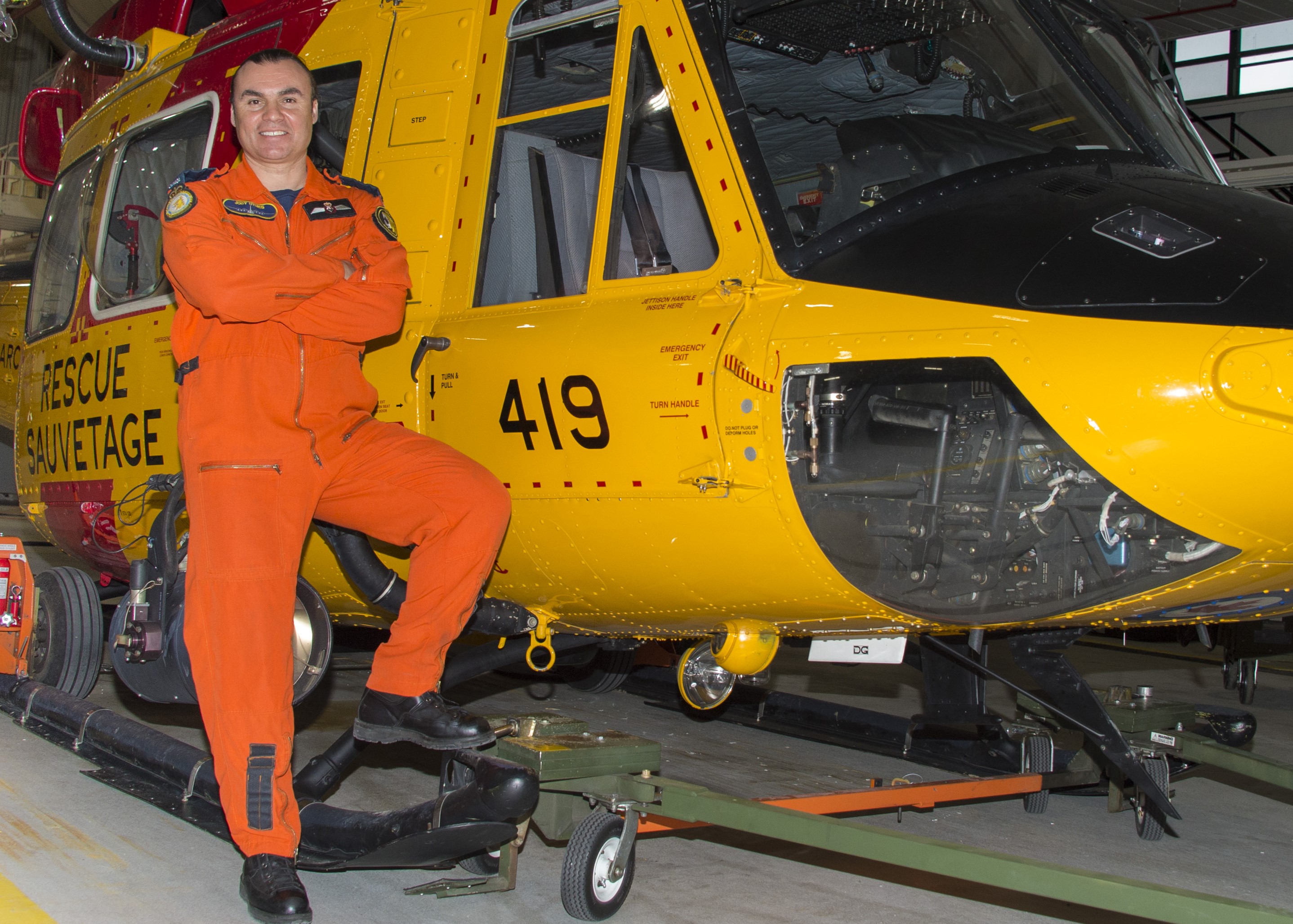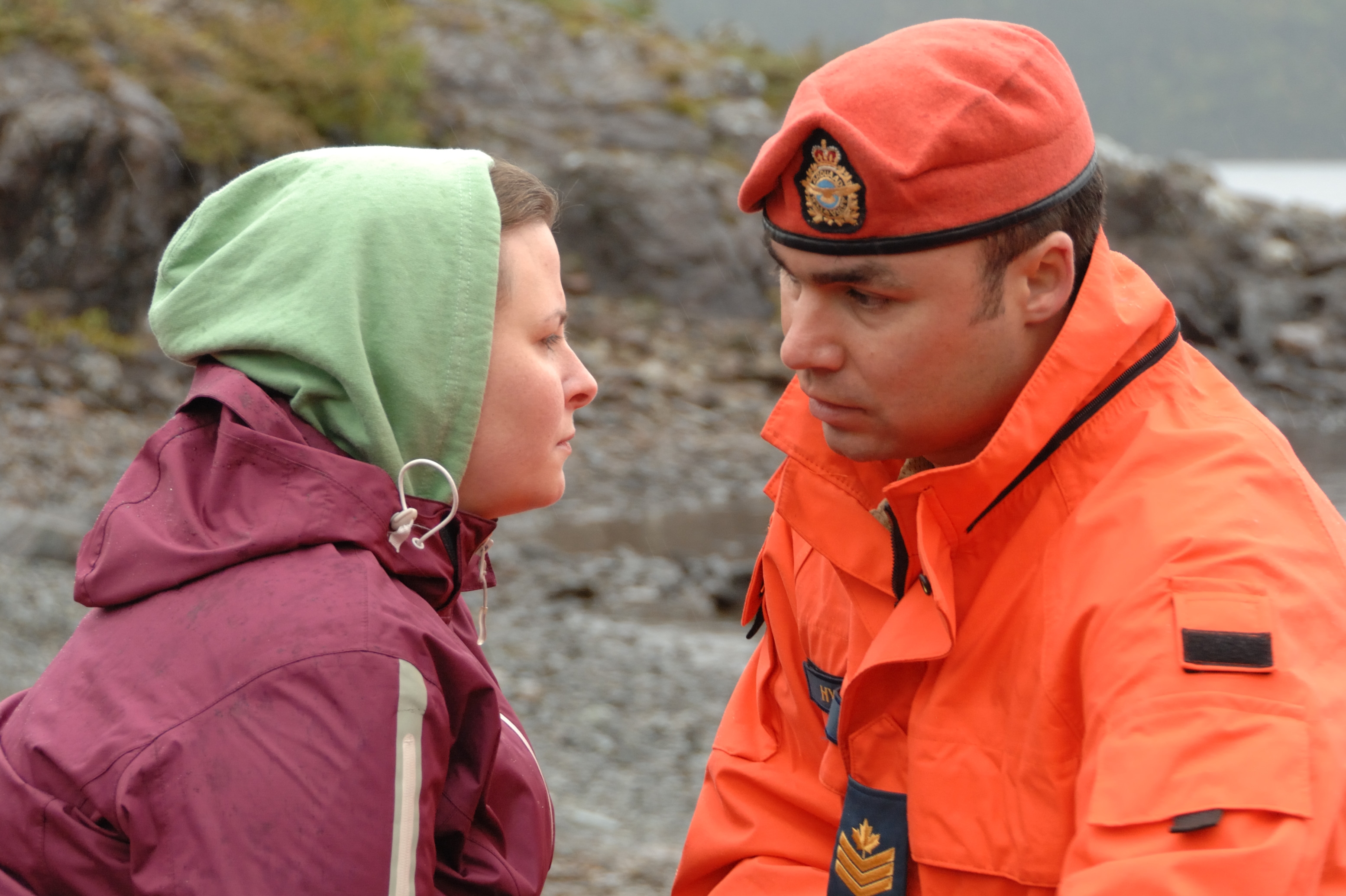Occupation in Perspective: Search & Rescue Technician
Magazine Article / April 19, 2021
Sergeant Gordon (Jody) Hynes grew up in a small village near Stephenville, Newfoundland and later joined the Canadian Armed Forces (CAF) in Halifax, Nova Scotia in January, 1996. He subsequently served as an infantry soldier in Petawawa until 2004 with the Light Infantry Battalion and then with 3 Royal Canadian Regiment. During that time, he completed three operational tours: two in Bosnia and another in Afghanistan. Sgt Hynes completed an occupational transfer (OT) to Search and Rescue Technician (SAR Tech) in 2004 and has since been posted (twice each) to SAR squadrons at 19 Wing at Comox, British Columbia and 8 Wing at Trenton, Ontario. He is currently serving with 424 (Transport & Rescue) Squadron in Trenton.
I really liked the idea of combining challenging skill sets and using them to help people in distress.
My path to becoming a SAR Tech was a long process, starting with an interview with a BPSO [Base Personnel Selection Officer]. I applied and my file went to Ottawa, where I was screened and nominated to go onto a 15-day program [as part of assessment for OT], which is held in the winter at Jarvis Lake, Alberta. After that, I went back to my unit and waited to be accepted for OT and the course. Once accepted for occupation transfer, I reported to Comox at the Canadian Forces School of Search in Rescue [CFSSAR] over the summer and began the year-long SAR course. The course consisted of several phases: ground ops; medical; winter ops; artic ops; diving; sea survival; parachuting, and mountaineering, to name just a few. I graduated around July and was posted to my first SAR unit.
There were two gentlemen I really looked up to in the Army who transferred [into SAR] a few years earlier, and I got a lot of positive feedback from them about the trade. My section commander at the time knew a SAR Tech as well that happened to be visiting him in Petawawa. He was kind enough to personally meet with me and provide the info I was looking for. His visit sealed the deal for my decision to apply.
My chain of command was very helpful and supportive, especially when coordinating my application process while I was in Afghanistan. I had a Master Warrant Officer there who was a very good leader that took care of his troops. I am very grateful for his help.
It sure did. I was a light infantry soldier and was very comfortable at being out in the field. I had a very high level of fitness and was quite used to working in different environmental elements. I kind of like it actually, even to this day. When you are out in the wilderness you learn to appreciate the little things - it keeps me from getting too spoiled!
If you want to be a SAR Tech you have to get used to challenges and making decisions on the move. Nothing is static, you have to think on your feet. The Infantry certainly prepared me for that. In the infantry we use to say “adapt, improvise, and overcome” and that carried over, for sure.
I really enjoy the mountaineering skill set - I love being out of doors. I had the privilege of spending two summers on Denali in Alaska working with the National Park Service as a volunteer. Loved and hated every minute of it! I loved the scenery and beautiful days up there, but when the weather got bad and we were on the brink of perishing, I hated it and vowed that I would never come back if I got off [the mountain] alive. I went back the next year, short memory I guess!
Most of the skill sets are challenging, because there is a lot to keep proficient with. Luckily, I have been doing it long enough that most skills at this point are maintenance. But it does keep me really busy.
No, absolutely no average days! It’s generally a pretty high tempo, even for training. I call it organized chaos. You are in at 0630 hours to load and prepare the aircraft for the day’s standby. You are on 30-minute notice as of 0800 hours. You go fly and train all day and, if a call comes in, you go respond. I never know if I am going to be home for supper or somewhere up north in the middle of nowhere responding to an emergency. If you are on night shift, you start a 1600 hours and are on until the next morning. We usually conduct night training on this shift and, again, if a call comes in we respond.
One time, my team-mate and I came in for a night flight around 1800 hours. While out training, we got called for a mission up north. At 0500 hours the next morning we were parachuting into a hunting camp for a gentleman with chest pain. We couldn’t get extracted by chopper because of the weather, and so we ended up paddling for two hours in a canoe we found to a boat on the Hudson Bay, where we transported the individual to an ambulance which then drove us 20 miles to a nursing station. We were up for about 34 hours. Nothing average about that!
To be honest, you don’t always. It’s important to have a strong and supportive family. My wife picks up a lot of the slack at home - she deserves a medal! It does seems to get a little bit better as time goes on, if you’re organized!
One in particular was jumping to an 11-year-old girl who had a head injury. She was out fishing with her parents up north on Mansel Island in Nunavut. She hit her head in rough seas while on the fishing vessel. By the time we got on scene, the weather was really bad and we had a short time to jump because the winds were very high and the cloud layer was coming down. We managed to get on the ground [to treat her] and six hours later she was extracted by a chopper crew from Gander, Newfoundland, when we transported her to a hospital.
You will always miss 100% of the shots you don’t take. Give it a try, what have you got to lose? And buckle up, because it’s going to be quite a ride!
Rescue!!
Are you up for the challenge?
For information about prerequisites for entry, the current training program and more, go to the 2 Canadian Air Division SAR (link accessible only on the National Defence network) webpage.

